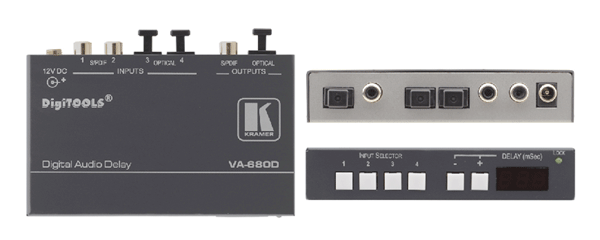Producing Conference Video Pt. 2: Lighting and Audio
Award-winning producer Shawn Lam looks at the art and science of stage lighting and the challenges of making lighting designed for performance work for video. He also discusses the meat-and-potatoes things you need to know for microphone selection and successful live-recorded conference audio.
Planning and proper coaching of the attendees, speakers, and stage manager are important to avoiding these problems and making sure that they are aware that they have to use a microphone of they will not be heard on the video. Selecting the correct microphones is another matter. Let's walk through a few options and discuss where they are best used:
Wireless lavaliere:
As most readers probably know, these are small clip-on microphones worn on individual speakers. The small microphone cords are often run under clothing to conceal them and connect with a battery powered radio transmitter, which sends a signal that is picked-up by a matching receiver. These are great for walkers and talkers as they don't need to be held by the speaker. Due to the location of the microphone, they can pick-up a bit more ambient noise than a hand-held microphone, and levels can drop as the speaker turns their head.
Wireless headset:
Similar to the lavaliere, the headset microphone connects with a transmitter, but instead of clipping on clothing, the headset is worn typically over one ear and a wand extends to the mouth with a microphone on the end. These are the best for walkers and talkers, as the microphone is at the same distance and location relative to the mouth, regardless of which way the speaker is looking. Their capsules are typically even smaller than lavaliere microphones and come in different colors so as to be less conspicuous seeing the location is on the face of the speaker. So while the face location is the main benefit, it is also the main con, as no amount of skin tone-matching can make it disappear completely.
Handheld microphones:
These come in wired and wireless varieties with a range of pickup patterns between omnidirectional and cardioid. Cardioid mics are the most common for this application and handheld microphones can be used at a lectern and in the audience as Q&A microphones.
Shotgun microphones:
Shotguns have the most directional pickup pattern, which makes them ideal for use on boom poles with an operator to achieve some degree of isolation. While that is not practical for most live stage events, they can also be used suspended overhead for a choir or mounted to the front of a stage facing the talent.
Boundary microphones:
If microphones were fish, boundary microphones would be sole fish: They lie flat, rather than stick up. I've seen boundary microphones (more commonly referred to by original patent holder Crown International's trademark name, PZM) used on lecterns, at the front of stages, and most commonly on conference tables. Most teleconference units utilize boundary microphones, which use the surface on which it sits to reflect sound waves into a diaphragm that is mounted parallel to the surface.
Regardless of which microphone you use, obtaining a high signal-to-noise ratio is always the goal and placing the microphone as close to your sound source as possible will deliver better results than a more expensive microphone that is poorly placed. One consideration in a live-mix environment that is often overlooked is audio delay. Both audio and video signals can respectively be delayed slightly from the initial acquisition, the microphone or image sensor, to when they are joined in the delivery medium.

Kramer Electronics' VA-6800 pro digital audio delay
The rate depends on the type and quantity of devices the signals pass through, but video switchers tend to introduce more delay than do audio devices, so in order to bring them back into sync, you'll need to use a digital audio delay device. If you're editing the video post-event then you can forego the additional device and simply nudge your audio a few frames to or fro. As a visual and audio reference, you can use a movie slate or simply have your talent clap their hands for you on stage.
Related Articles
Whether you're shooting a conference, a convention, or an AGM, the setup of the shoot is one of the most important parts of the production process. It's the step where you select the equipment, establish your camera positions, lay your cables, and check and recheck your audio and lighting.
What happens when you deliver your event live? This is nothing new for live TV broadcasters, but more and more event video producers are being asked to perform their postproduction activities in real-time—that is, live as the event is occurring.
Award-winning producer Shawn Lam looks at two key elements of the process: capturing multimedia presentations effectively for both live-switched productions and post-produced edits, and how to become a successful technical director of a live-switched shoot, whether for IMAG delivery or providing a live feed for broadcast or webcast.